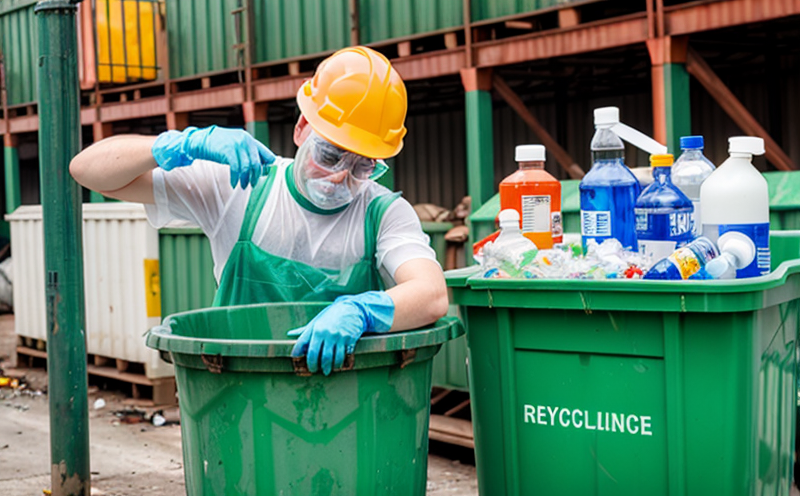EN 16192 Inorganic Waste Testing by XRF
The European Standard EN 16192 specifies a methodology for determining the chemical composition of inorganic waste materials using X-ray fluorescence (XRF) analysis. This service is crucial for ensuring compliance with regulatory requirements and supporting informed decision-making processes within various sectors, including environmental management, recycling industries, and R&D divisions.
The application of EN 16192 is particularly relevant where the chemical composition of waste streams needs to be accurately characterized. The standard provides a robust framework for testing inorganic materials such as metals, minerals, and other non-organic compounds commonly found in industrial waste.
By leveraging XRF technology, this service offers precise elemental analysis across a wide range of elements, from trace levels up to significant concentrations depending on the sample type. This capability is invaluable for quality assurance teams responsible for monitoring waste streams before they enter recycling processes or disposal facilities.
The process begins with proper sample preparation, which involves cleaning and cutting the material to ensure representative samples are analyzed. After preparation, the samples undergo XRF analysis, where intense X-ray beams interact with the sample’s atoms, causing them to emit characteristic secondary X-rays whose energies depend on the atomic number of each element present.
The resulting spectrum provides a fingerprint that identifies and quantifies the elemental composition of the waste material. This information is then compared against predefined acceptance criteria outlined in EN 16192 to determine whether the waste meets specified regulatory standards or internal quality benchmarks.
For industries dealing with hazardous wastes, this service ensures safe handling practices by identifying potentially harmful elements that require special disposal methods. In recycling contexts, it aids in optimizing material recovery processes by distinguishing valuable components from those that are not economically viable to reclaim.
The precision and reliability of XRF analysis make EN 16192 an essential tool for compliance officers navigating complex regulatory landscapes. It supports strategic planning around waste management programs aimed at reducing environmental impact while maximizing resource efficiency.
Scope and Methodology
| Key Steps in EN 16192 Inorganic Waste Testing by XRF |
|---|
| Sample Preparation: Cleaning and cutting the waste material to ensure representative samples are analyzed. |
| X-ray Fluorescence Analysis: Using intense X-ray beams that interact with the sample’s atoms, causing them to emit characteristic secondary X-rays whose energies depend on the atomic number of each element present. |
| Data Interpretation: Analysis and comparison against predefined acceptance criteria outlined in EN 16192. |
The methodology adheres strictly to the guidelines set forth by EN 16192, ensuring accurate and repeatable results. Each step is meticulously documented, providing comprehensive traceability throughout the testing process.
Customer Impact and Satisfaction
- Enhanced Regulatory Compliance: Ensures that waste materials meet stringent environmental regulations.
- Informed Decision-Making: Provides data-driven insights for optimizing resource recovery and reducing operational costs.
- Improved Safety Practices: Identifies hazardous elements in waste streams, leading to safer handling procedures.
Environmental and Sustainability Contributions
- Promotes Circular Economy Principles: By accurately characterizing waste materials, this service supports recycling initiatives aimed at minimizing landfill usage and promoting reuse.
- Reduces Environmental Footprint: Through precise analysis, industries can avoid unintentional contamination of valuable resources, thereby preserving natural ecosystems.





